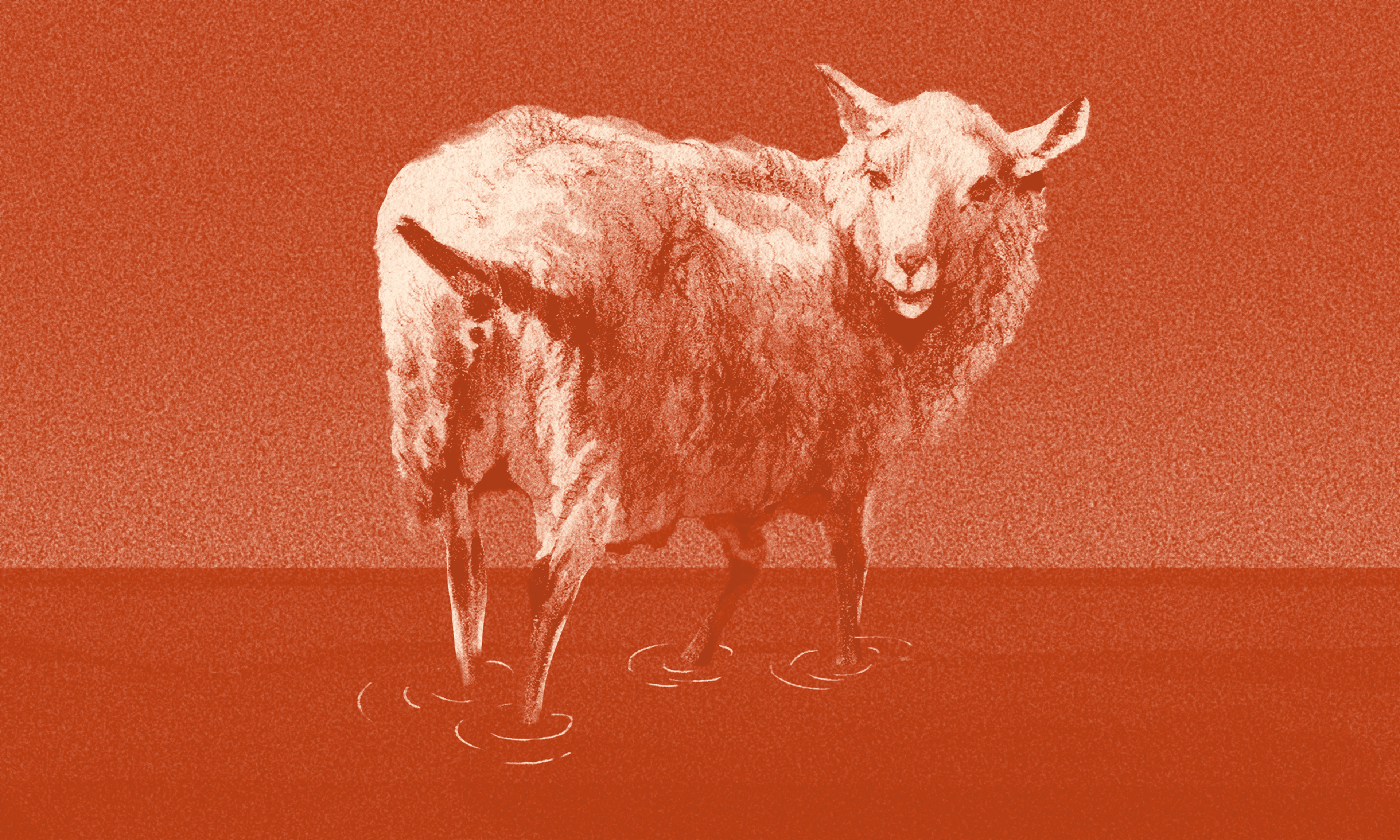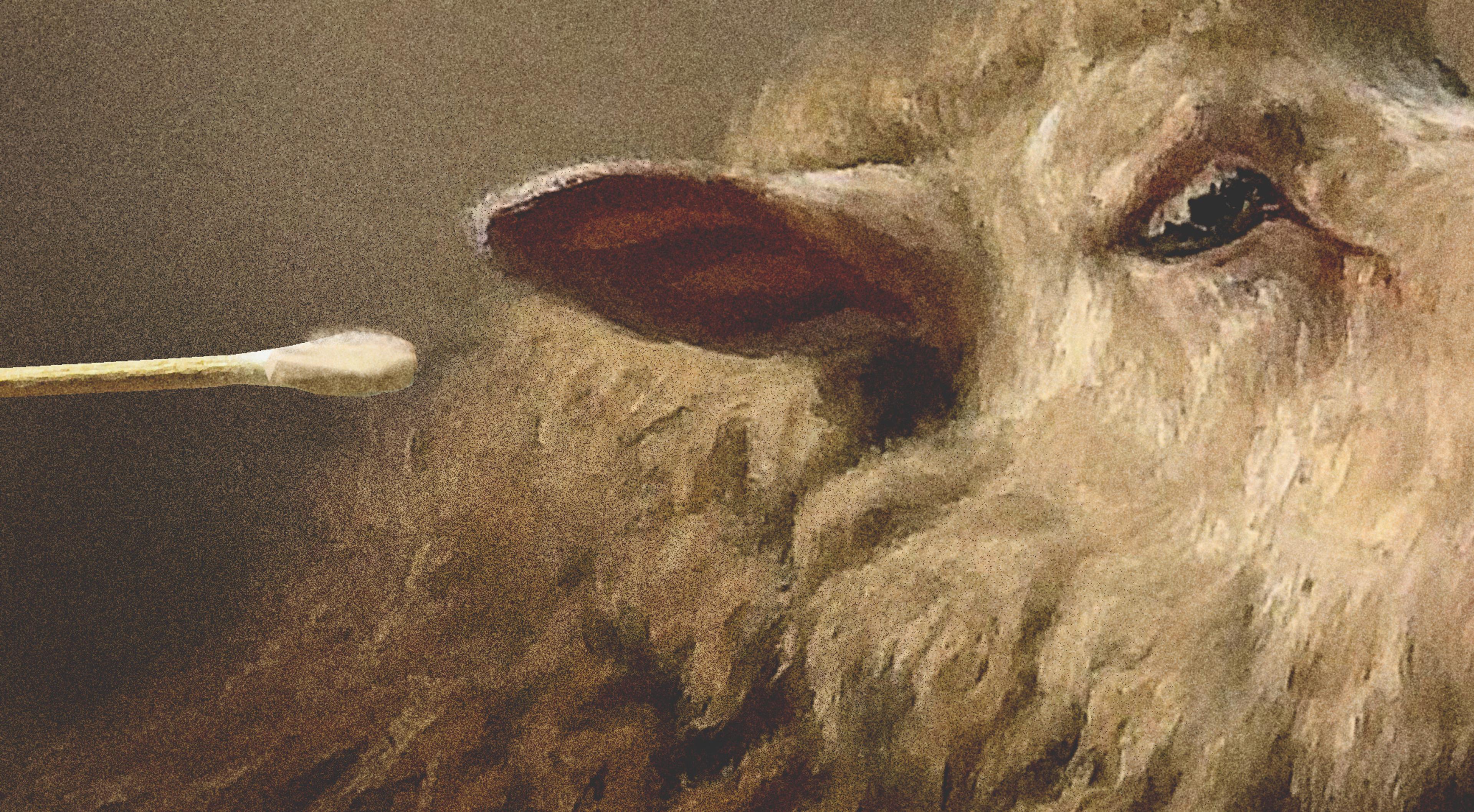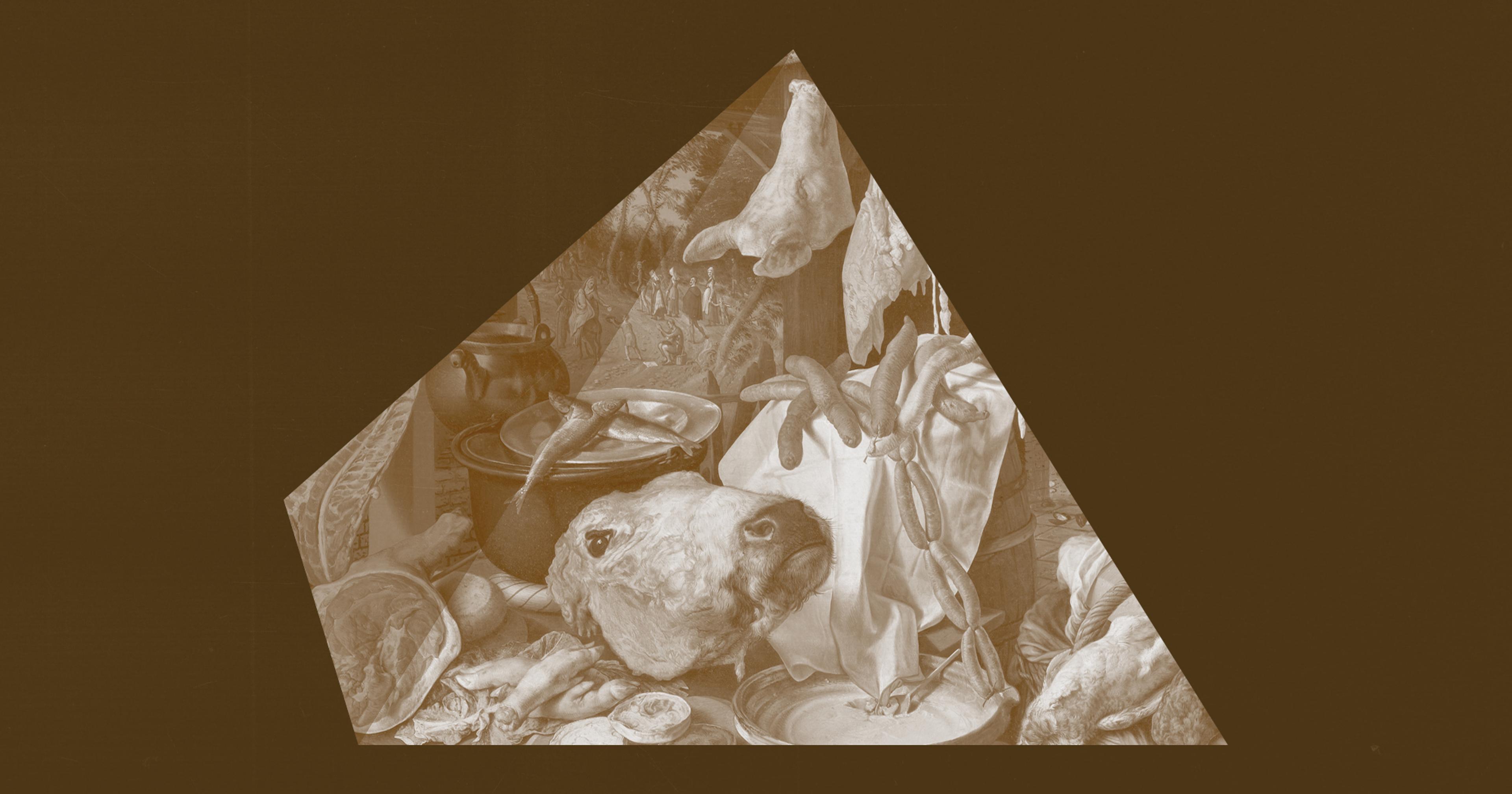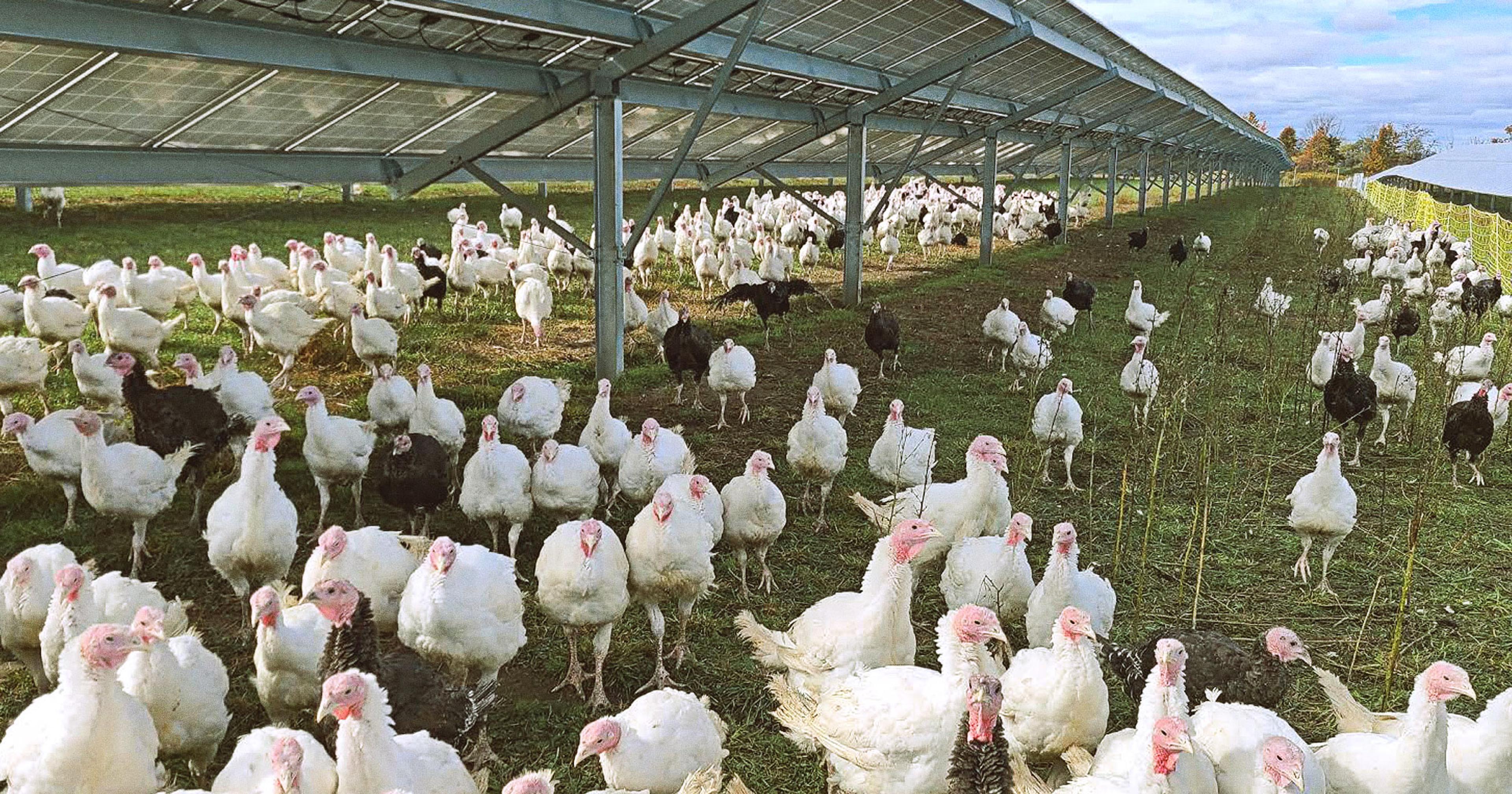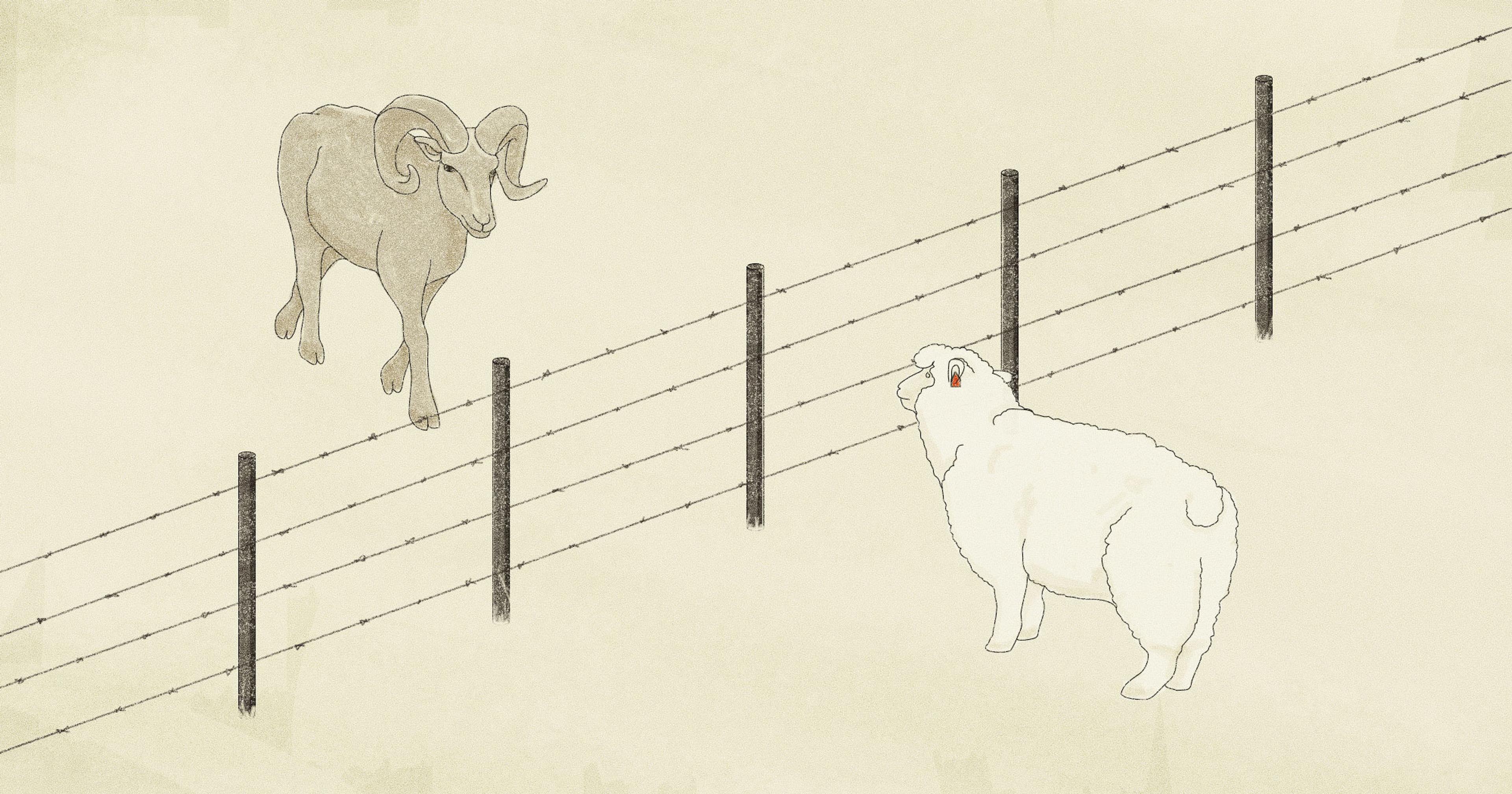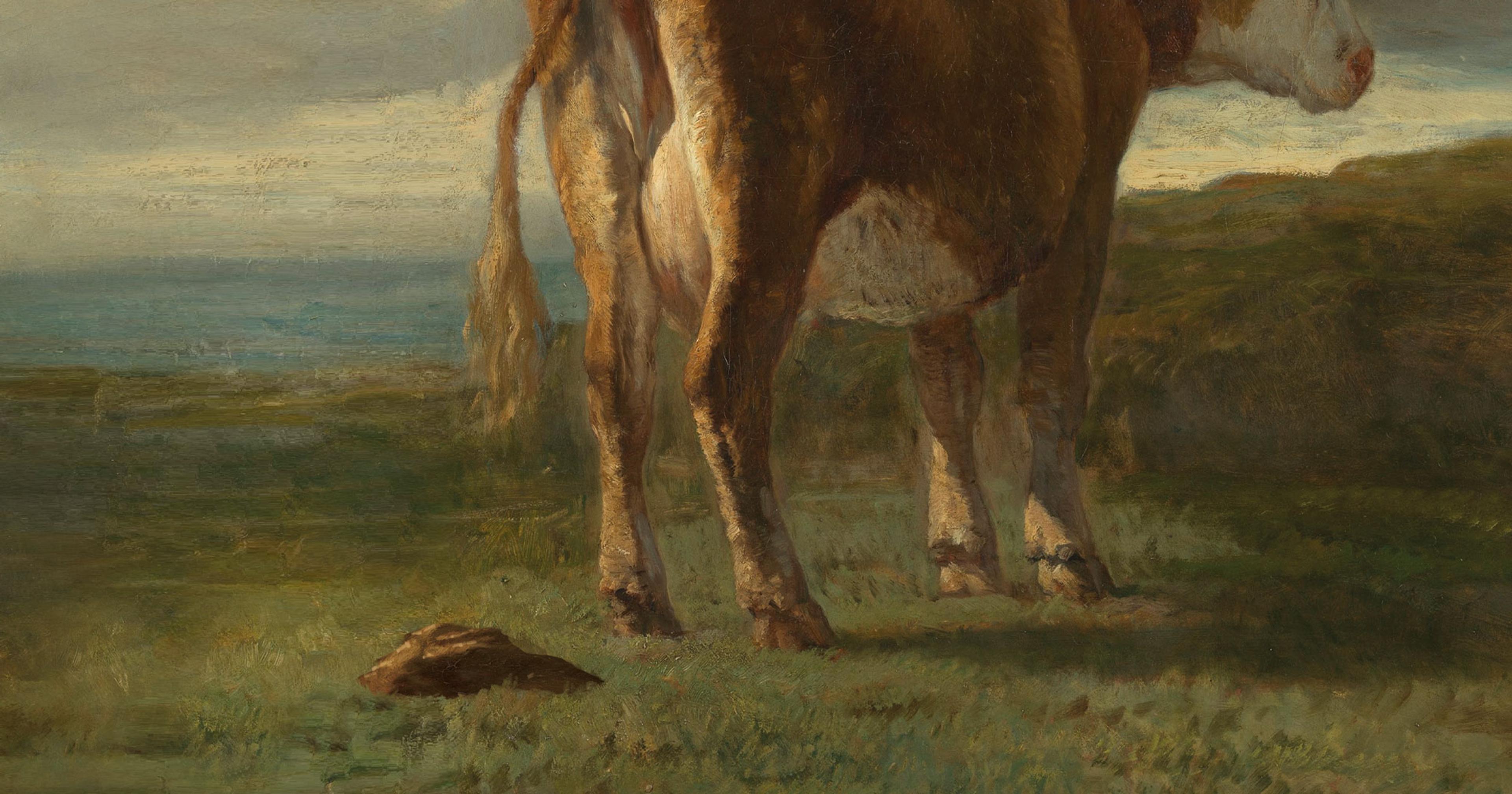Millions of gallons of blood go to waste in slaughterhouses every year. But for some farmers, blood is the primary harvest.
Mara Kushelman visits her mosquitoes almost every day. “They have no idea the weekend is a thing,” she says with a laugh. For Kushelman, a Ph.D. candidate at the Yale School of Public Health, it’s a short walk to the Fikrig Lab, which specializes in arthropod-borne infectious diseases (think ticks, mites, fleas, mosquitoes, and other generally bothersome insects). The entryway to the tall building at 60 College St. is flanked by enormous epoxy sculptures of a mosquito and a bedbug. The real, live mosquitoes are all the way up on the sixth floor.
Kushelman’s research focuses on dengue fever, so she keeps white paper cups of mosquitoes in climate-controlled chambers for experiments. The males are easy to take care of — they’re happy to drink sugar water from a wet paper towel draped over their cup. But the females? They need blood. On the top shelf of the lab refrigerator is a clear 30ml bottle with a white cap, full of bright red liquid. This isn’t human blood: It’s defibrinated sheep’s blood, sourced from a blood ranch in California.
*
Modern science and healthcare require increasingly large quantities of blood (the global blood product market — human blood, to be specific — is projected to grow at 6.4% over the next five years, according to Grand View Research). The average American is already familiar with the need for blood, since hospitals have long relied on donations for procedures like transfusions and organ transplants. And considering healthcare is now the fastest-growing sector of the U.S. economy, this need is only expected to increase.
Yet some blood comes from unexpected places. A few years ago, New England horseshoe crabs were in the news for their role as (involuntary) donors of the bright blue blood used in vaccine production. But crabs aren’t the only non-humans donating blood. Mammal blood from familiar farm animals is used in everything from routine hospital lab tests to cutting-edge virology research. Sheep blood is the cheapest and most widely available, but goat blood, bovine blood, and rabbit blood are all commonly used, along with mouse, chicken, and more.
Of course, this all begs the question: Where is the best place to get vials of sheep blood? “I can’t say I thought too much about where blood came from,” said Kushelman, at least not until she had to order goat blood for a specialized procedure. She had heard rumors of labs that pay college students to donate their blood. But in the case of her mosquitoes, that would be both unnecessary and impractical. “Human blood is expensive, and you need it fresh,” she said wryly. Instead, the Fikrig Lab orders vials of sheep blood through a centralized spreadsheet from a company in California that specializes in animal blood products.
But does it really take a whole farm specializing in blood production to feed a few lab-grown mosquitoes? Instead, a logical place to look for animal blood might seem to be a slaughterhouse. After all, over 40 million tons of blood are generated by slaughterhouses in the U.S. every year (over 10,000 Olympic-sized swimming pools’ worth). As it turns out, though, about 70 percent of slaughterhouse blood in the U.S. is discarded. In fact, blood is the main source of pollution in the millions of gallons of slaughterhouse wastewater generated annually, most of which ends up in waterways, according to the Center for Biological Diversity.
“I can’t say I thought too much about where blood came from.”
Why do we waste so much blood? There are many reasons, but at its core it’s an infrastructure problem related to American food history. Long before the biomedical industry needed vials of blood for lab tests and experiments, blood consumption in American kitchens had already begun to decline. In the late nineteenth century, as the meatpacking industry industrialized, upper-class Americans started to avoid foods like blood sausages, which they associated with “backwards” Central and East European immigrants.
The modern slaughterhouses built to fill the growing demand for meat after World War II didn’t usually incorporate infrastructure to save blood in a safe and hygienic way, and by the 1970s animal blood had virtually disappeared from American kitchens. That same decade saw the introduction of new regulations to control animal byproducts more strictly (making it more expensive and complicated to preserve blood at the industrial level).
As time went by, regulations ossified, and there have been no substantive changes to the rules about saving livestock blood since 1974. In fact, the USDA only removed a burdensome requirement for defibrination (a procedure to prevent blood from clotting) four years ago. The final result: during the same decade (1970s) when the U.S. healthcare sector expanded dramatically, the slaughterhouse sector, which could have provided a key ingredient for that expansion, gave up on blood almost entirely.
So, ironically, our reluctance to eat blood — which means that there is more of it available than ever — may have made it less available for the biomedical industry in the long run. And there’s no easy way to fix the infrastructure problem. As Arun Kumar Gupta explained, there are “logistical barriers to safely recovering and processing blood as a clean ingredient, unless it was a planned part of the system from the start.” Gupta is assistant professor at the department of food processing at Sardar Vallabhai Patel University of Agriculture and Technology, and the the lead author of a scholarly review of slaughterhouse blood uses.
The fact that most Americans — unlike Brits, Spaniards, or Costa Ricans – no longer enjoy blood sausage, is only one of the issues. A more prosaic challenge is “the lack of infrastructure and dedicated collection systems in many slaughterhouses,” said Gupta. “Collecting blood in a hygienic, food- or pharma-grade manner requires closed-loop systems, trained personnel, and investment in storage and processing facilities — things that aren’t commonly integrated, especially in conventional or high-throughput operations.”
Even when the blood can be captured appropriately, large slaughterhouses can’t always provide information on what the animals have been eating, whether they’ve been on antibiotics, or offer traceability back to the farm. And if it’s not clean enough or fresh enough to eat, livestock blood certainly isn’t high enough quality for a hospital or lab.
*
This is where “blood farming” comes in, filling the gap in a lucrative market for high-quality blood, serum, and plasma. At operations like Quad Five Ranch in central Montana, farmers keep animals exclusively as live blood donors, and every vial is traceable back to the initial batch.
It’s an unusual type of farming, to say the least. Candy Mitchell, who handles customer service at Quad Five, is used to getting asked what exactly she does for work. “I actually get that question a lot,” she said. “I basically tell them it’s a donor animal blood and serum facility, and tell them that we bleed horses, sheep, goats, and cows.” None of the animals are killed in the process, just like with human blood donation drives. The sheep are bled 1 liter each in special chutes every 28 days (it takes seven minutes for the entire process), after which “they eat like kings,” explained Mitchell.
“Using live donor animals with complete traceability and controlled conditions — definitely represents the gold standard.”
There are special considerations for this type of operation. Some of the animals, like the cattle, are rotated out every couple of years. “Cows tend to hold a grudge, and they don’t like being bled,” laughed Mitchell. The draft horses (purchased at Amish auctions) and goats end up in a special paddock which the ranchers at Quad Five call the “retirement pasture.” Sheep can be rehomed to ranches in Utah once they get too big for the chutes, at which point they’re raised like any other meat animal.
“Quad Five’s approach — using live donor animals with complete traceability and controlled conditions — definitely represents the gold standard,” said Gupta, the slaughterhouse blood expert. There are only a few operations in the U.S. like it (and according to Quad Five, they’re the only ones who are traceable). Outside of Denver, the Colorado Serum Company, founded in 1924, keeps a smaller herd of over 200 horses, 85 Holstein steers, 150 sheep and 22 goats in a 22-acre facility. Larger operations, like California-based HemoStat, contract with regular livestock farmers to source their blood.
For even more specialized work, there are operations like CoCalico Biologicals in Lancaster County, Pennsylvania. If an experiment requires pre-vaccinated blood (to test immunity, for example), researchers can purchase an individual animal for an experiment. Rabbits start at $415 each. Goats are pricier, at $1,379 per head.
The pricing is transparent, but there is an air of secrecy surrounding blood collection. “I can answer vaguely,” said Audrey S., the office manager at HemoStat Laboratories in a phone call (she declined to use her last name). At Quad Five, Mitchell was reluctant to share photographs for this article. “We try to steer away from sending pictures of the blood being drawn directly.” On their website, CoCalico Biologicals euphemistically mentions a “disposal charge” included in the overall price of their product. “You can only vaccinate an animal with one type of antigen,” explained Kushelman. Once a goat has been used for a specific experiment, it’s not much use for anything else. Not all farms have a “retirement pasture.”
“Cows tend to hold a grudge, and they don’t like being bled.”
And not all blood farms sound as pleasant as Quad Five. Last year, a routine USDA inspection at Alabama-based based Southern Biotech found multiple health and safety infractions, including injured goats and a wild raccoon in with the rabbits. A particularly controversial practice is the farming of pregnant mares for a serum used to artificially induce sows at hog farms to go into heat.
It’s no surprise, then, as Gupta points out, that “blood-based products still carry a certain stigma.” The idea of herds of sheep lining up to have their blood drained, even if it’s saving lives, still sounds like something out of a bad science fiction movie.
*
Back in the lab at Yale, I ask Kushelman how much blood she goes through. It turns out that the experiments only take about two milliliters a week. In other words, it would take nearly 10 years for her mosquitoes to drink 1 liter of blood — a sheep’s monthly donation at Quad Five.
Kushelman’s neighbors, though, use a lot more. They’re researchers at a nearby lab who study sleeping sickness, transmitted by the dreaded African Tsetse fly, which feeds on cows. She shows me a box of flies in a chest freezer. “They take a gigantic amount of blood,” she says. The bigger the experiment and the larger the insect, the more blood is needed. She tells me to Google “engorged Tsetse fly.” I do, and wish I hadn’t.
Farming blood is different from farming chicken or beef. A cow slaughtered today feeds someone a few days later. Farming blood is more indirect. A sheep blood agar plate could detect strep throat at a pediatrician’s office, or it might feed lab-grown mosquitoes for years, slowly helping develop a strategy to eradicate malaria.
One thing is for certain: blood is a growth industry.

